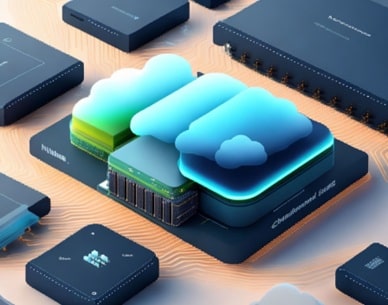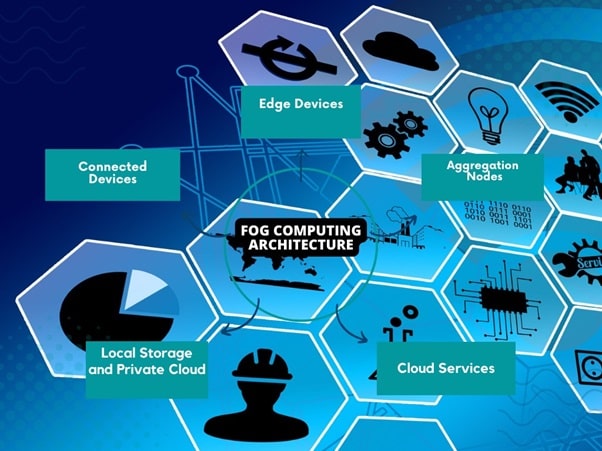Home »
IoT (Internet of Things) Tutorial
Fog Computing in IoT (Internet of Things)
In this tutorial, we will learn about the fog computing in IoT, characteristics of fog computing, and fog computing architecture.
By Shahnail Khan Last updated : August 16, 2023
What is Fog Computing in IoT?
Fog computing, also known as Fogging or Edge Computing, is a computing method introduced by Cisco. It involves using devices at the network's edge to handle a considerable percentage of computing, storage, and communication locally before delivering it across the Internet. Instead of transmitting all data to remote cloud servers for processing, these devices, such as sensors, create and analyze data locally, eliminating the requirement for high bandwidth.

Fog computing's primary goal is to reduce the need for remote servers by processing data near its source, resulting in faster replies and less data transfer across vast distances. When devices require the processed data directly, this strategy is beneficial for reducing delays in receiving responses.
Characteristics of Fog Computing
Fog Computing is a virtualized platform between end devices and traditional Cloud Computing Data Centres, frequently at the network's edge. The following are some key characteristics of fog computing:
1. Edge Location and Low Latency
Fog Computing runs near to-end devices at the network's edge. This closeness minimizes the time it takes for data to travel, making it perfect for applications that require fast replies. For instance, in online gaming, even a very slight delay can affect how the player feels.
2. Wide Geographic Reach
Fog computing deployments are spread out, which is one of its defining characteristics. This means Fog Computing is distributed across various locations within a network. For applications like transmitting high-quality streaming material to moving automobiles, this is crucial. Fog nodes are installed at key locations along roads and highways to enable flawless content distribution.
3. Support for Large-Scale Sensor Networks
For large-scale sensor networks, such as those used for environmental monitoring, the deployment of fog computing is essential. These networks consist of numerous sensors scattered across a considerable region. By enabling effective data processing and analysis at the network's edge, fog computing eliminates the requirement to send all data to a single place for processing.
4. Real-Time Interactions
Fog Computing is ideal for applications requiring real-time interactions. For example, in industrial automation, real-time monitoring and control of machines may avoid accidents and optimise operations.
5. Mobile Device Compatibility
Fog Computing supports mobile devices. It is capable of direct communication with tablets, smartphones, and other mobile devices. Technologies like as the Location Identifier Separation Protocol (LISP) are utilised to facilitate this, allowing for smooth device movement.
Fog Computing Architecture

1. Connected Devices
These devices connect to the IoT network using various wired and wireless technologies. They constantly generate a lot of data. Wireless technologies used in IoT include Zigbee, Zwave, RFID, 6LoWPAN, Bluetooth, etc. IPv4, IPv6, MQTT, CoAP, etc., are among the IoT protocols.
2. Edge Devices
An edge device can be a device having network, storage, and processing capabilities. Multiple edge devices are placed across a larger region to help end devices. They are strategically placed in various areas such as manufacturing floors, atop electrical poles, across railway tracks, within vehicles, and on oil rigs. Switches, embedded servers, controllers, routers, and cameras are a few examples of edge devices. These edge computing devices handle extremely private data.
3. Aggregation Nodes
Every edge device has an aggregation node, which analyses data quickly within seconds to minutes. These nodes retain IoT data for a number of hours or days. To create these central node points and handle somewhat sensitive data, aggregation services are used.
4. Cloud Services
All aggregation nodes are linked to cloud services. Time-insensitive or less-sensitive data is processed, analysed, and stored in the cloud.
5. Local Storage and Private Cloud
Fog computing architecture frequently uses private servers or cloud solutions to store a company's confidential information. Additionally, these localised storage options support data security and privacy.
Conclusion
Finally, Fog Computing provides a breakthrough approach to IoT data processing by putting computing power closer to the data source. It reduces latency, facilitates large-scale sensor networks, enables real-time interactions, and improves mobile device compatibility by using edge devices, aggregation nodes, and cloud services. This design not only provides faster responses but also helps with effective data management, making it a critical technology in the developing environment of Internet of Things applications.
Advertisement
Advertisement